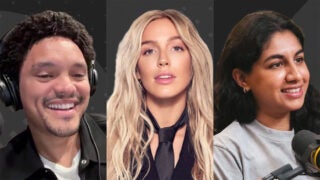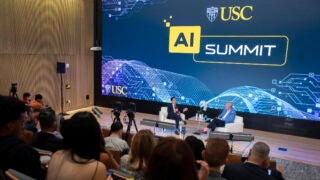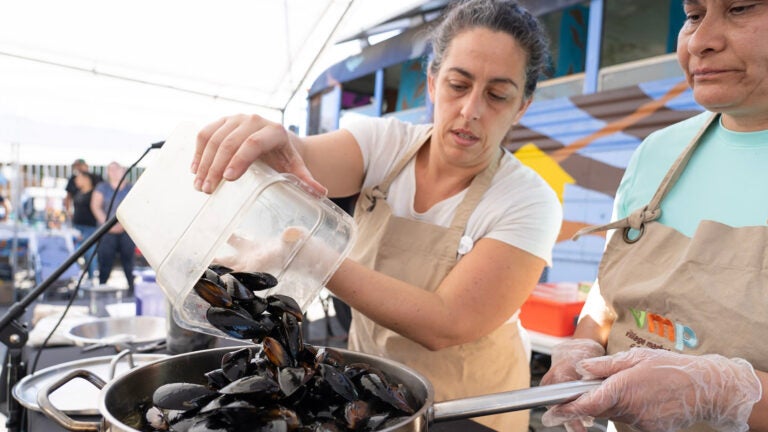
A cooking demonstration takes place at the South Central Sustainable Seafood Fest in November. The event — with sponsors including USC Sea Grant and USC’s Wrigley Institute for Environment and Sustainability — brought seafood producers, local chefs and community organizations together to facilitate cooking demonstrations, seafood tastings and conversations about harvesting sustainable seafood. (Photo/Nick Neumann)
USC Sea Grant research, community outreach show approval of aquaculture can be earned
People across all demographics could change their minds when they learned about the environmental benefits of seafood farming, USC research suggests.
Wild-caught or farmed? If you have no idea how to answer this question, don’t worry — you aren’t alone. According to the National Oceanic and Atmospheric Administration, most Americans know little to nothing about seafood farming, also known as aquaculture. Those familiar often have negative associations based on the U.S. media’s tendency mainly to cover the environmental risks of farming and the health risks of consuming farmed Atlantic salmon.
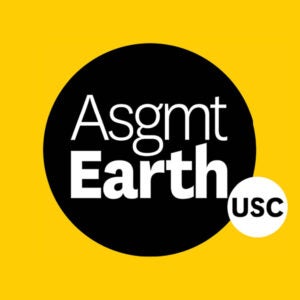
Scientists are concerned because U.S. wild fisheries are limited. We already import up to 85% of our seafood annually, more than half of which is from foreign-produced aquaculture, often without adequate environmental protections. With concerns for the environment, overfishing and a $17 billion trade deficit, scientists and the government have advanced the U.S. aquaculture industry over the last two decades with extensive funding for technology improvement and workforce development. But the U.S. is now in a bit of a pickle: What good is all this effort if Americans won’t actually eat farmed seafood?
Changing opinions on aquaculture
A study published in the Journal of the World Aquaculture Society in 2023 found that opinions, even of those opposed to seafood farming, could be swayed relatively quickly if given the right reasons. This study was led by co-first authorsBrianna Shaughnessy of the University of Massachusetts Boston School for the Environment and Amalia Aruda Almada from the USC Dornsife College of Letters, Arts and Sciences’ Sea Grant Program, along with partners from the Aquarium of the Pacific in Long Beach and Santa Clara University.
“What we found surprising about our results,” said Shaughnessy, “is really what we didn’t find.” Contrary to expectations, the team did not find major differences in familiarity with or opinions of seafood farming across regions, education levels, age or race. Moreover, those surveyed across all demographics readily changed their minds when they learned about the environmental benefits of aquaculture.
The authors employed a third-party research firm to conduct two topic-blind surveys in nine western and northeastern states, ensuring a representative balance of demographics. One survey focused generally on marine aquaculture, and the other focused on the rapidly growing seaweed farming sector. Labeled a “superfood” by some and used in a growing array of products like fertilizer, biofuel, dog food, toothpaste, ice cream, pastries and medicines, seaweed is the fastest-growing sector of American aquaculture.
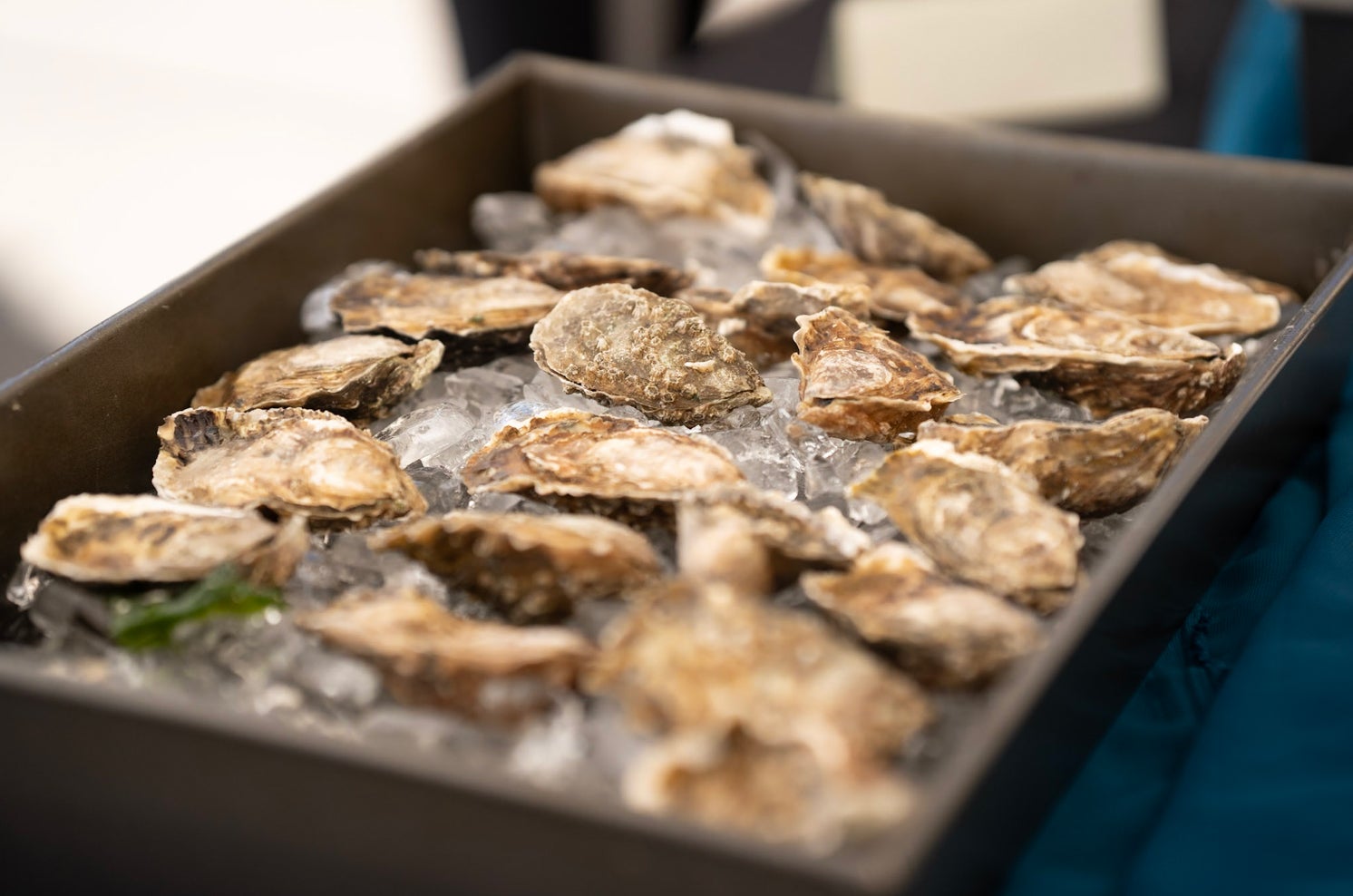
The participants completed knowledge and opinion surveys about aquaculture before and after watching a brief educational video clip from either the Aquarium of the Pacific or CBS News. About half of those surveyed had little to no familiarity with marine aquaculture; even fewer knew anything about seaweed farming.
Environmental messages resonated most
The after-surveys tested the persuasiveness of the pro-aquaculture messages from the videos. Surprisingly, most people surveyed — even those who began with a negative opinion of aquaculture — became more supportive. The messages that resonated most were environmental, such as that seafood farming can provide a long-term sustainable alternative to wild fisheries, seafood farming in the United States is better for the environment than importing it from countries with less stringent protections for ecosystems and wildlife, and seafood farming is much better for the environment than land-based food such as beef or pork.
For seaweed farming specifically, participants cared that it does not need fresh water to grow, requires no pesticides or fertilizers, and combats climate change not only by producing fewer greenhouse gases than land-based farming but also by acting as a carbon sink, absorbing carbon dioxide from the atmosphere. Participants also liked seaweed’s potential as a biofuel to replace land-based, water-consuming biofuel crops such as wheat, sugarcane, rice and corn.
These environmental messages only made up about a third of the messages tested by the survey. Most of the messages — pulled from globally established public forums such as the Monterey Bay Aquarium’s Seafood Watch program, the Aquarium of the Pacific’s Seafood for the Future program and the Marine Stewardship Council — focused on the health benefits of consuming seafood or the economic benefits (e.g., local job production, aquaculture can lower prices to improve accessibility to more communities, better for reduction of trade deficit).
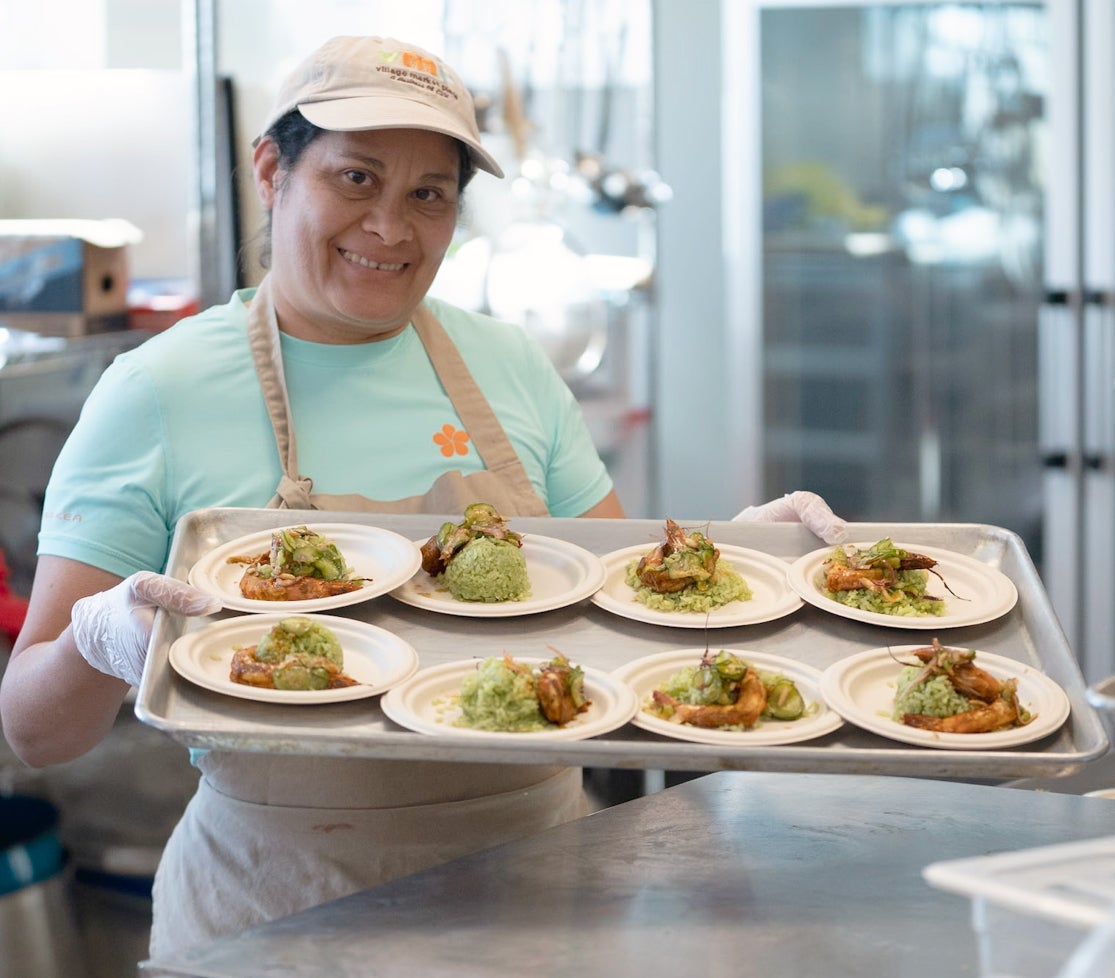
Shaughnessy noted that this study was small and exploratory, and these tested messages “oversimplify some complicated aspects of growing things.” Almada wants to see longer-term studies to see if these opinion changes persist over time. Nonetheless, Shaughnessy was invited to present their results at the National Marine Educators Association meeting this year, and the study is already being used by a national coalition of aquariums and other education-oriented groups to inform public messaging.
Seafood farming already supplies 50% of the seafood consumed globally; recent internationally collaborative studies argue seafood farming must increase to meet the global demand for protein by 2050. Christopher Costello, lead author of one such study published in Nature, said studies like Shaughnessy and Almada’s that help overcome public misconceptions “will be as important as scientific breakthroughs have been in advancing sustainable aquaculture.”
Finding trusted sources
Shaughnessy and Almada’s surveys hint at another critical piece of the puzzle: Scientists, aquariums and aquaculture farmers — rather than the government, nongovernmental organizations and grocery stores — are considered the most trusted sources of information about seafood farming. Shaughnessy and Almada noted that aquariums may only have about 30 seconds to capture someone’s attention before they move on to the next exhibit, so studies like this are critical to understanding what messages resonate most with the public. “We are trying to figure out how to talk to people about this,” Almada said.
When asked about this study, shellfish and seaweed farmer Dan Ward, owner of Ward Aquafarms in Megansett Harbor, Mass., encouraged by the results, said, “It is the responsibility of all of us in the aquaculture industry to help educate consumers.” Although some Americans are familiar with the idea of open ocean net-pens of salmon from negative media coverage, shellfish and seaweed farming is quietly and quickly growing around the country. “If more consumers knew the ways that our farming is helping the environment and helping to maintain fishing viability throughout our coastal waters,” Ward said, “people would be much more likely to support U.S. aquaculture.”
According to Shaughnessy, “Aquaculture is not a monolith” — and even using the word “aquaculture” is problematic as the various sectors are so nuanced. Shaughnessy further argued that initiatives like the U.S. Department of Agriculture’s “Know Your Farmer, Know Your Food” could extend into the seafood realm, helping consumers find local, sustainable ocean products.
Seafood in South L.A.
Along these lines, Almada recently helped co-organize the first communitywide effort to increase seafood accessibility and bring local, sustainably harvested seafood to the greater L.A. area in November. The South Central Sustainable Seafood Fest — co-hosted by USC Sea Grant, USC’s Wrigley Institute for Environment and Sustainability, the School of Public Affairs at San Diego State University, the Village Market Place, Community Services Unlimited and local seafood farming companies Santa Barbara Mariculture Company and Holdfast Aquaculture — brought seafood producers, local chefs and community organizations together to facilitate cooking demonstrations, seafood tastings and conversations about harvesting sustainable seafood.
Why South Los Angeles? Almada along with other partners did a pilot project several years ago that found that the majority of residents of underserved neighborhoods like South L.A., Compton and Inglewood are eating less than the USDA’s two-serving-a-week recommendation for seafood. Residents reported that the main obstacles to eating more seafood were price, local availability and awareness. Almada said that when the local community group Community Services Unlimited provided hands-on experiences with farmed mussels, the residents were “so motivated to learn more about sustainable seafood and to eat more mussels.” These findings catalyzed the birth of the South Central Los Angeles Seafood Hub, whose mission is to increase equitable access to sustainable, locally grown seafood. The recent Seafood Fest was intended as a celebration of the initial success of the Seafood Hub.
Diane Kim, co-founder of Holdfast Aquaculture, a member of the Seafood Hub and senior scientist at USC’s Wrigley Institute, said that at the Seafood Fest, she loved getting direct feedback about her products from the community, “including from folks who were trying mussels for the first time.” She was excited that L.A. residents were interested in meeting the farmers themselves and receptive to learning about the products and how they were produced. This allowed for “broader conversations about aquaculture and the environmental and health benefits of sustainable seafood,” Kim said.
And this is exactly what Shaughnessy and Almada’s found in their study. People are open to farmed seafood. They just need the right information and equal opportunity to learn and try.
“Marine aquaculture has had a real communications problem,” Almada said. But new studies like this and events like the recent Seafood Fest give hope that perhaps once we use the right messengers and the right messages, people can change their minds.

